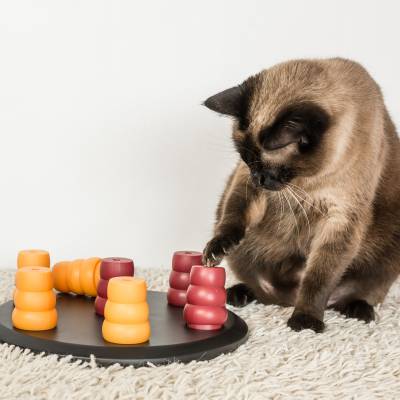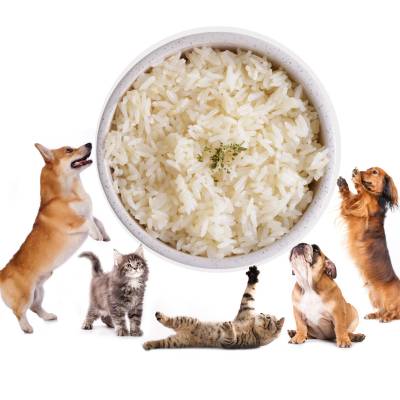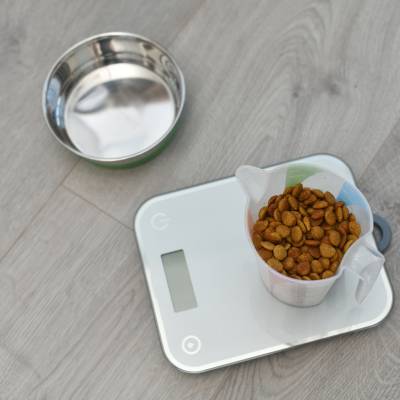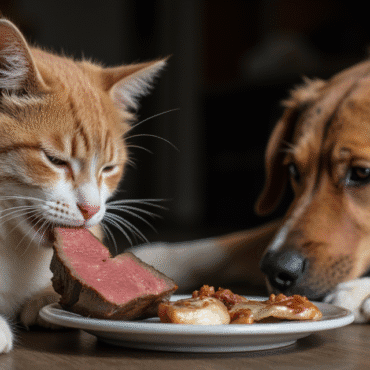
Summer Safety Reprise
Introduction Hi everyone and thanks for joining me on this episode of Val Talk’s Pets. Well we are in full summer swing and with all the heat waves we have […]

 play_arrow
play_arrowIs My Pet Fat? Val Cairney

Don’t you just hate going to the vet, and the first thing they do is weigh your pet? The next thing is to be told their weight, and more than likely, the next part is that the vet thinks your pet needs to lose a certain amount of weight. Of course, some people have a great exercise program with their pets, and weight isn’t an issue, but many of us are the opposite. So how do you know if your pet is overweight or obese? Or maybe they just need to lose a few pounds. It can be obvious when a pet is obese, but those few extra pounds can be a little harder to see. And are a few extra pounds really that bad? Well, let’s find out!

So, there are some basic things to do to judge a pet’s weight. Obviously, inspecting your pet for rolls and a large girth is one of them. Also, we are to feel for a pet’s ribs. If you can’t feel their ribs, then they are overweight. Being a bit overweight is quite common in the pet world. The American Kennel Club pointed to a survey conducted by the Association for Pet Obesity Prevention. It said that 55.8% of dogs in the United States are overweight or obese. Now, that is just the U.S., so statistically, we are looking at a fair proportion of family pets being overweight. Overweight dogs will have no waist around the middle, and it will be difficult to find their ribs. They may also be lethargic and not interested in moving about. The next thing is to have your pet weighed. The pet’s weight will be recorded, and the vet will then use a “system of measurement called body condition scoring to determine your dog’s or cat’s level of fitness. Petmd.com explains that “the points range from one to five for a dog, where one means the animal is very thin—almost to the point of emaciation—and five is indicative of obesity.
Your veterinarian will determine your pet’s body condition by measuring the fat found on specific landmarks on the body. For example, the ribs should be easily felt, with each rib bone easily distinguished from the others, and should have just a light layer of fat over them. The rear area, above the base of the tail, should have a light, smooth pad of fat. Other areas that are checked include the spinal column, hip bones, and shoulder blades. If these bones cannot be distinguished from the fat, your pet is carrying too much fat. If the bones are sticking out and are too easily distinguished, your pet is not carrying enough fat. Looking down at your standing pet from a top view, you should be able to see the shape of the waist clearly. Looking at your standing pet from the side, you should be able to see or feel a light tuck, or curving upward, in the stomach, just beneath the rib cage.
Now, at least, it is not one size fits all. The ideal weight of a dog is going to depend on “age, breed, and general overall health. As for cats, the same idea is used for feeling for ribs, etc., but cats may also have issues from being overweight that are a bit different from dogs. Cats often jump from one place to another or on surfaces. But if your cat is just not making the jumps anymore, one thing to look at is his weight. Overweight cats, according to greatpetcare.com, “are more likely to develop urinary tract disorders, such as infections or blockages. Cats may also have a matted coat because they cannot groom that area anymore. When cats go to the vet, the vet will use a 9-point scale. Optimal body weight is considered a 5, while anything over that is considered overweight. A score of 6 would be considered mildly overweight, while a score of 9 would be considered severely obese.
As with dogs, cats that are overweight are at risk for arthritis, diabetes, high blood pressure, cancer, urinary tract disease, heart disease, and respiratory problems. If any of this seems a bit too close to home, it is possible that addressing your pet’s weight may be needed.
Let’s start with food and dogs.

There are quite a few weight management foods on the market for small breeds, medium breeds, and large breeds. These foods limit the calories and often contain some specific ingredients to help the pet feel satiated while consuming fewer calories. You may notice an ingredient called L-Leucine (loo-seen) and L-Carnitine. L-leucine is an essential amino acid that is used in the biosynthesis of proteins. L-carnitine, according to WebMD, is a chemical that is made in the brain, liver, and kidneys. It helps the body turn fat into energy. These two are often seen in good brands that have been formulated to create a weight loss product that will help the pet metabolize better but also feel that they have eaten and are not starving.
Some weight management foods for pets will use fish as the protein, as fish is a leaner protein and therefore aids in weight loss. The problem is whether your dog will like fish-based food, and if not, you are probably looking at chicken. As with any weight loss regime, it’s basically calories in and calories out. The food plan as to which foods are to be fed will have to be determined, and then what is the goal for weight loss? The food will have to be measured for what they are to consume within a 24-hour period. Unfortunately, treats are usually removed from the diet unless the calories of the treats are calculated into the daily caloric intake. That doesn’t mean, however, that some low-fat options from the fruit and vegetable selection may not be added to help the dog with the decrease in tasty treats. Blueberries, carrots, and apples are great choices. Just remember to check the “can and cannot” list for fruits and vegetables before adding them to your pet’s diet. And this is to give them a little treat, not bulk up the food. Weight loss has to be done at a slow pace to not cause any nutritional deficiencies or serious illnesses, so making a plan with the vet is a good idea.
Cats are the same. There are the same foods available with leucine and carnitine, as well as fish and chicken. Cats in particular need to go slow with weight loss to prevent a disease called hepatic lipidosis, also known as fatty liver. A cat’s food will also have to be measured, and again, treats go by the wayside or get greatly reduced. Cats are not usually big on vegetables or fruit, so maybe a few treats, but be conservative.

One thing that can be used for both dogs and cats are food or treat puzzles where they have to work for the treat or kibble to find it. This can decrease what they eat and keep them stimulated. Snuffle mats, too, are a great idea for both cats and dogs to hide the treats in the mat and have them hunt for the prize. Next, of course, is the exercise portion. For a dog, playing and walking are things that can be done. If going outside is not feasible and the dog does not have any serious joint issues, a few tosses of the ball down the stairs can count as exercise for the day. That is, of course, if you have a dog that likes to fetch a ball or toy. There are toys for cats that are interactive to get them going as well. Lasers and wands with feathers are great, as are some toys that operate with a battery to move and twist to get the cat jumping on the toy or chasing it.
Okay, this all sounds great, but what really happens when you are trying to get your pet’s weight under control?
Here is what has happened to me with one of the pets.
Our store cat was totally fine with her weight until I saw some dry flakes on her skin, and I decided to give her a skin and coat supplement that came in the form of a treat. Now, I don’t know if this was a coincidence or not, but after about 3 weeks of having a chew a day, she all of a sudden started to just balloon in weight. I really don’t know if it was the chews or if she turned 7 and things changed for her, but she definitely put on weight. I was getting so frustrated constantly hearing customers call her fat, ask if she was pregnant, or say things to her like, Boy, you seem to like your food. And then it was weird because people, for some reason, wanted me to agree and say yes, she’s fat by saying to me, So she’s fat, isn’t she? Isn’t she fat? I would respond by saying she is just perfect for us, but it really bugged me.
One of the reps for a specific company noticed her weight gain and offered to be a part of trying to get her weight under control. It wasn’t the direction I really wanted to go, but she was very keen, and I said we could try a bag. She brought the food and checked in regularly, but after one bag, nothing was different, so I thought it was time to have her checked for any thyroid issues or anything else that could be causing the weight gain.

Off we went to the vet, and yes, he believed she needed to lose about 4 pounds. On a cat, that is actually a lot. I figured I’d cut the difference and strive for 2 pounds. So, our conversation was quite funny, really. He wanted to have her go on a specific diet for weight loss. I disagreed with eating food that wasn’t retailed. I also disagreed with the ingredient panel of this food. So, we compromised, and he gave me the parameters of calories and protein that should be in a food that she would eat that was believed to facilitate weight loss. So, I found food that was very close to the numbers he wanted. It wasn’t my choice with regards to the brand, but I said, Okay, let’s try this for one month and see what happens.
We diligently measured her food every day. She was given absolutely no treats or bits from our food. She loves to beg for cream cheese, bits of lunch meat, or her favorite mac and cheese. But it was a big fat no, and we all stuck to it. The other thing we did was give her little bits of her allotted food throughout the day. This way, I felt she wouldn’t feel deprived, and I didn’t want her to go into starvation mode and have her body start to store more fat. And we also made sure she had play time throughout the day where she had to run or chase. We followed this routine for a month. I took her back to the vet for a weigh-in. She had lost nothing! Not an ounce! Well, that was interesting. The vet said, Well, we might have to take away her wet food. I was so upset by that because she loves her wet food. And we were being very careful with that too. Anyway, I said to the vet, Okay, let’s do it my way now and see what happens. My brain is saying that my little carnivore really doesn’t need any high-sugar grains or carbs. She’s a carnivore. So, I went for high protein and no grains.
We still measured her allotment and kept her wet food in stews rather than pate because stews tend to have fewer calories. After a month, we went back to the vet. On the scale she went, and ta da, she lost 1 and a half pounds. How tempting to say, I told you so. But I would never say we have a good relationship. He asked how that happened, and I told him my rationale, and he said, Well, it seems to have worked! Our little cat was recently at the vet for a procedure, and her weight was taken. This time she is in a not-too-bad range, and I think that is just fine. At least the fat insults have stopped, so she must look different.
I am often approached by pet parents asking about weight loss foods. And as I said, there are quite a few on the market. Many people tell me that they have food that was recommended to them, but the dog or cat doesn’t really like it, and they seem to be just starving. This is when it becomes really important to be a label reader. Weight-control food or not, the first two ingredients need to be proteins. I really shake my head when I read the first ingredients as brewer’s rice, corn, corn gluten meal, and wheat. What!!!

I’ve noticed that a lot of people do not know what Brewer’s rice is, so let’s just define that. I will often describe it to a pet parent as the chips that are left over when processing rice for humans. Wikipedia states specifically that “brewer’s rice is the small milled fragments of rice kernels that have been separated from the larger kernels of milled rice. Brewer’s rice and second heads are two of the many by-products that rice milling creates. There are a lot of sites that will describe the inferiority of brewer’s rice, and then there will be a few that speak of benefits. Rice in and of itself is a carbohydrate, so whether it is in its full form or in its little form as chips, it still contains methionine and cysteine, the two amino acid precursors that help with the absorption of taurine. This is the DCM issue.
However, in terms of weight loss products, I would prefer to see whole-grain brown rice. This way, the hulls and husks are present, and brown rice breaks down more slowly, so we have a more satiated pet. Corn and wheat are high in natural sugars, and as starchy carbohydrates, their complexity is not the same as, say, oats or barley. Remember when your mom would give you porridge or oatmeal on a cold day first thing in the morning so you would have something in your stomach to stay with you? Well, the same principle applies. The more complex the carbohydrate, the better chances we have for the pet to feel full longer, thereby thwarting the begging and whining because they are hungry.
I also feel that protein is still a very important part of a pet’s diet if they are trying to lose weight. Dogs and cats are mammals, so the principle of feeding the body with protein is important so the pet’s body does not go into starvation mode and begin eating its own muscle mass. If this happens, the pet will actually be, quote/unquote, “fatter than they were before” as their fat vs. lean muscle mass will tip towards the fat. This is why we often see the protein in a weight-conscious food as fish or chicken. If our pet is eating a weight loss product that has little protein and the first ingredients are brewers rice, corn, corn gluten, wheat, wheat gluten, and then some chicken, it is very possible that the pet will lose weight, but at what cost?

Does the pet have fewer numbers on the scale because he is now “fatter” in terms of body fat vs. muscle, which will weigh more? I think this is where the body composition scales need to play more of a role than the actual number seen on the scale. In the meantime, it may be easy for a vet to tell you that your dog or cat needs to lose 5 or so pounds, but it is easier said than done. Finding a food your pet will eat that will help with weight loss is not that easy. Then you are looking at reducing what the pet eats. So, looking at some fruit or vegetable treats may be helpful in this case, so the pet doesn’t feel like they are missing out. But try that with a cat! Increasing exercise is obvious but not always feasible. Truth be told, Tundra is overweight, but he is a very difficult dog to exercise. He will not chase any toys. Basically, he has no concept of play. More than likely, where he came from and his life there did not encompass any play with humans. Now he may have played with other dogs, but I can’t say we have ever seen him be interested in that either. We try to chase him around the yard, but he’ll have the zoomies briefly, and then no matter what you do, he will not run around again. It is a challenge, I can tell you. Walking him is the only real exercise for him, and in the summer, it’s not always feasible to take a big furry dog out in 30 degree Celsius weather. Anyway, it’s an ongoing challenge.
So the bottom line on whether your pet is fat and needs to lose weight could be something you have determined by simply looking at him or her and seeing if they have no waist, have rolls, or are having difficulty jumping, walking, grooming, etc. The vet can also determine, more specifically, the weight that needs to be dropped and figure out a plan with you. The increase in exercise is huge; taking out treats, or at the very least, cutting down the amount by at least half, and then looking for the right food I say, Be really diligent here; look for protein first and foremost; look for those complex carbs; and forgo the empty calories. If the pet has intolerances to grains or allergies, stay on the food that deals with that, but look to reduce their intake and, again, cut out the treats.
I actually changed Tundra’s food to a senior formula because he is 8 or 9 years old, but I found he gained weight noticeably. So, in order to offset that, I went back to his fish-based diet, and he has lost some weight and stabilized. But it is not a senior formula. The point here is that sometimes you can’t have everything. A weight-loss food may contain ingredients your pet doesn’t tolerate. You can’t force the pet to eat food that is for weight loss and have him turn into an itchy mess.
Weight loss for pets is not an easy task. If you have had great success, then please let us know how you did it. Some pets are fat because they are stuffed with junk and empty food. That is a whole other issue. But a pet that is well cared for and starts to put on weight, maybe because the treats have snuck up a bit, or someone is ill and can’t walk him as much, or age is becoming a factor, falls into that place where looking to use the tools to get the weight down is necessary if possible. Have a look at your pet and make an assessment, and then remember that slow but sure wins the race. Read your labels and assess your pet’s intake. Research methods like puzzles and light exercise options. Because as I say, knowing is caring.

Tagged as: pet obesity, brewers yeast, healthy pet food.
Hi everyone, and welcome to Val Talk’s Pets, the forum for pet parents and enthusiasts alike. So, I have been working in the pet industry now for almost 10 years and, on a daily basis, I handle a lot of issues and questions arising from pet parents. I am not a veterinarian but I do have certifications in Canine, Feline, Small Animal, Fish and Herptile and Avian Health and Nutrition from the University of California, Davis Extension, the Vet College.

Val Cairney July 28, 2023
Introduction Hi everyone and thanks for joining me on this episode of Val Talk’s Pets. Well we are in full summer swing and with all the heat waves we have […]

Val Cairney October 31, 2025

Val Cairney August 1, 2025
For the price of a coffee, or more if you are feeling generous, you can help keep this podcast going & growing. Please visit my ko-fi page to make a donation. Thanks!
all rights reserved - Val Talks Pets - 2024